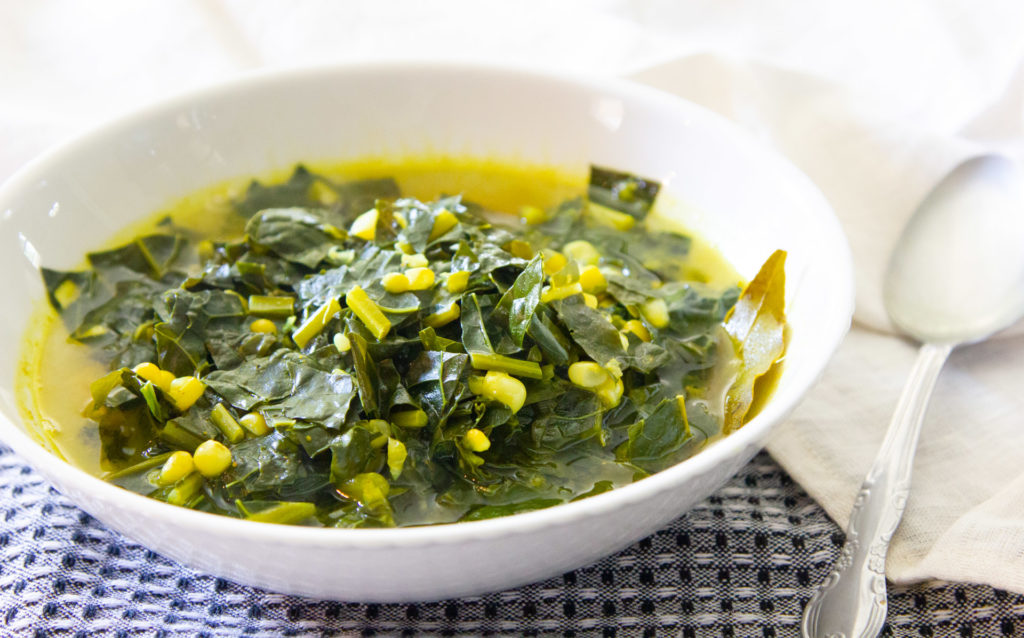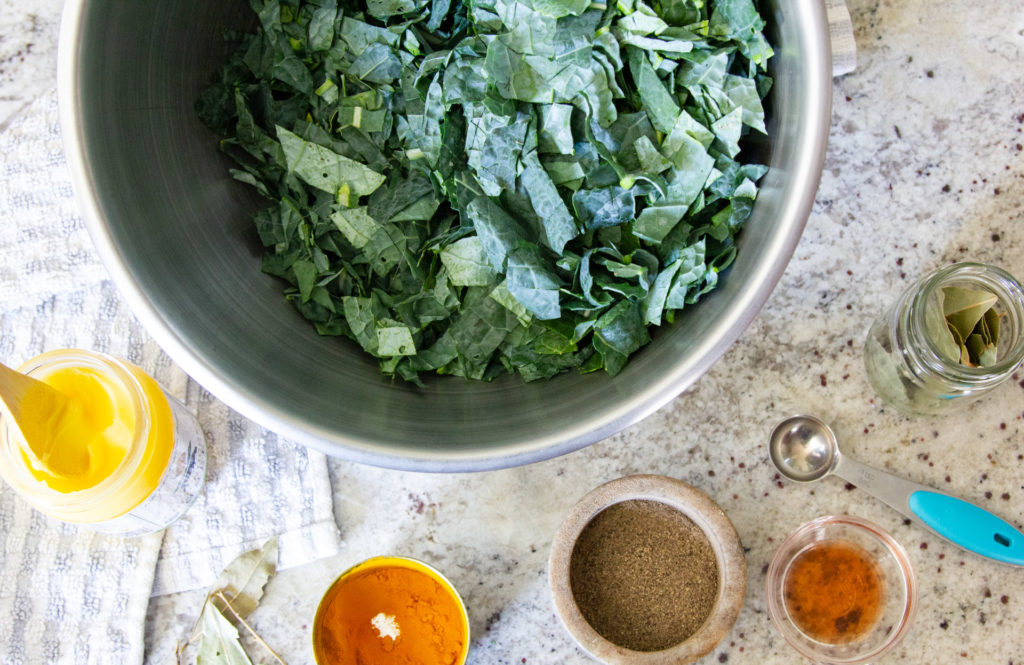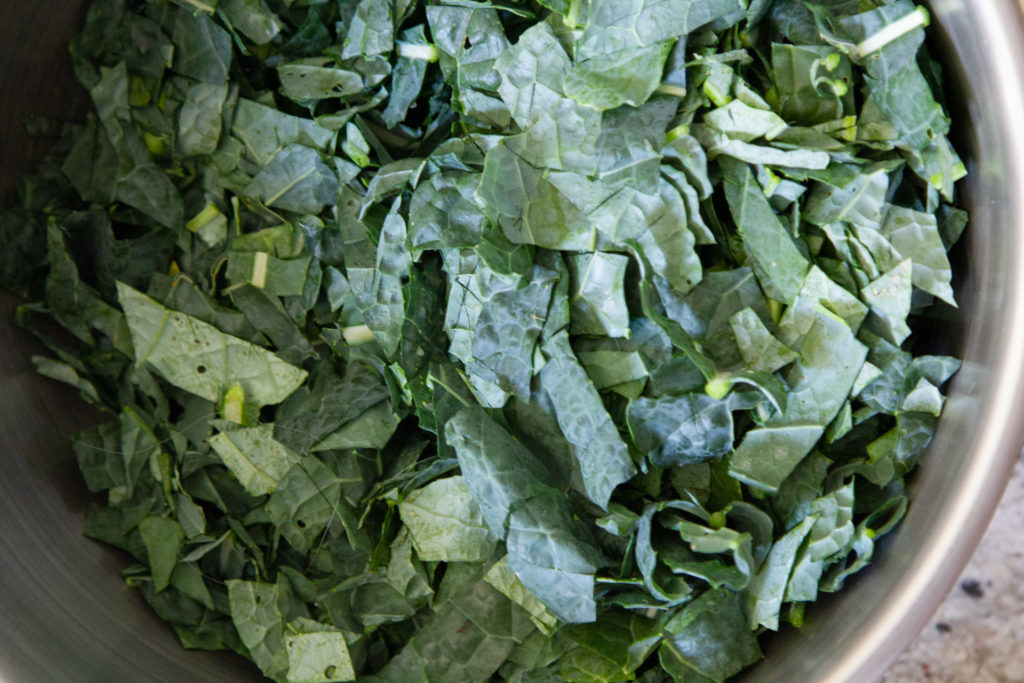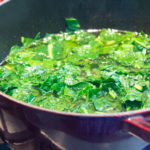This post may contain affiliate links. Please see our disclosure for more information.
Feeling heavy? This simple, yet flavorful, kale soup recipe is highly supportive for Kapha dosha. Enjoy it regularly if you have a Kapha disorder.
One suggestion by Ayurvedic practitioner and Joyful Belly School of Ayurvedic Diet and Digestion director John Immel is to enjoy a soup like this for lunch and supper one day a week as a mild fast.
If you are interested in getting your Kapha balanced, I encourage you to pick a day, and really do this simple fast.
Have a light, Kapha appropriate breakfast such as legumes, khichdi, corn cakes, barley cereal, or simply fresh fruit.

I encourage you to try this kale soup as the recipe is written. If it doesn’t taste good to you, or you feel that you want more variety, consider adding Kapha supportive vegetables, such as broccoli, cauliflower, cabbage, celery, celery root, yams, any other greens. Garlic could also be added.
Kale is a mildly bitter green that supports Kapha by stimulating peristalsis, or movement through the digestive tract.
All leafy greens have this effect, and this is why a daily serving of leafy greens is recommended if you have a Kapha imbalance.
Bitter taste in general is beneficial, because of its ability to improve bile flow. Bile stores toxins after they are neutralized by the liver, and flushing bile flushes these toxins.
The preferred fat source for this cleanse kale soup is ghee, which is one of the only fat sources that doesn’t aggravate Kapha.
This is because of the way ghee is made. Ghee is full of fire and it is highly purified and able to invigorate subtle channels of the body.

Spices for Kale Soup
Turmeric invigorates, purifies, and moves the blood. It is one of the very best spices to treat Kapha’s thick, sweet blood.
Turmeric dries dampness, and its bitter taste is mildly cleansing for the liver and blood. It is known to improve circulation and lymph drainage by thinning the blood.
Black pepper improved circulation by expanding the blood vessels. It also destroys mucus in the digestive tract and sinuses.
You might be interested to know that Trikatu, which is the classic Ayurvedic formula for reducing Kapha, consists of black pepper, pippali (another form of black pepper), and dried ginger. (Dried ginger is a lot more heating than fresh ginger.) Just image how spicy this formula is to understand what it takes to reduce Kapha dosha.
Bay leaf is warming, alkalizing, and light. Perfect for Kapha. I highly recommend bay leaf when cooking soups and stews involving beans and lentils.
Red wine vinegar heats up digestion, and aids in fat digestion.


Kapha Cleanse Kale Soup
Ingredients
for the first step
- 2 teaspoons ghee
- 1/2 teaspoon turmeric powder
- 1/2 teaspoon black pepper
- 1 bay leaf
for the second step
- 4 cups water
- 6 cups kale washed and chopped
- 1 teaspoon red wine vinegar
- 1/4 teaspoon Himalayan pink salt
for the third step
- 1 cob corn kernels only (sub with 1/2 cup frozen corn)
optional ingredients
- chat masala (see notes)
- 1-2 cups broccoli, cauliflower, cabbage, celery, celery root, yams, etc.
Instructions
- Heat ghee in a large saucepan on medium heat. Add turmeric, black pepper and bay leaf and sizzle for 20 seconds to release the aroma and the medicinal properties of the spices.
- Add water, kale, red wine vinegar, and salt, and bring to a boil. Reduce heat and simmer for 15 minutes.
- Add corn and simmer for 5 minutes. The kale should be soft. If not continue to cook a little longer. Taste, and adjust for salt.
